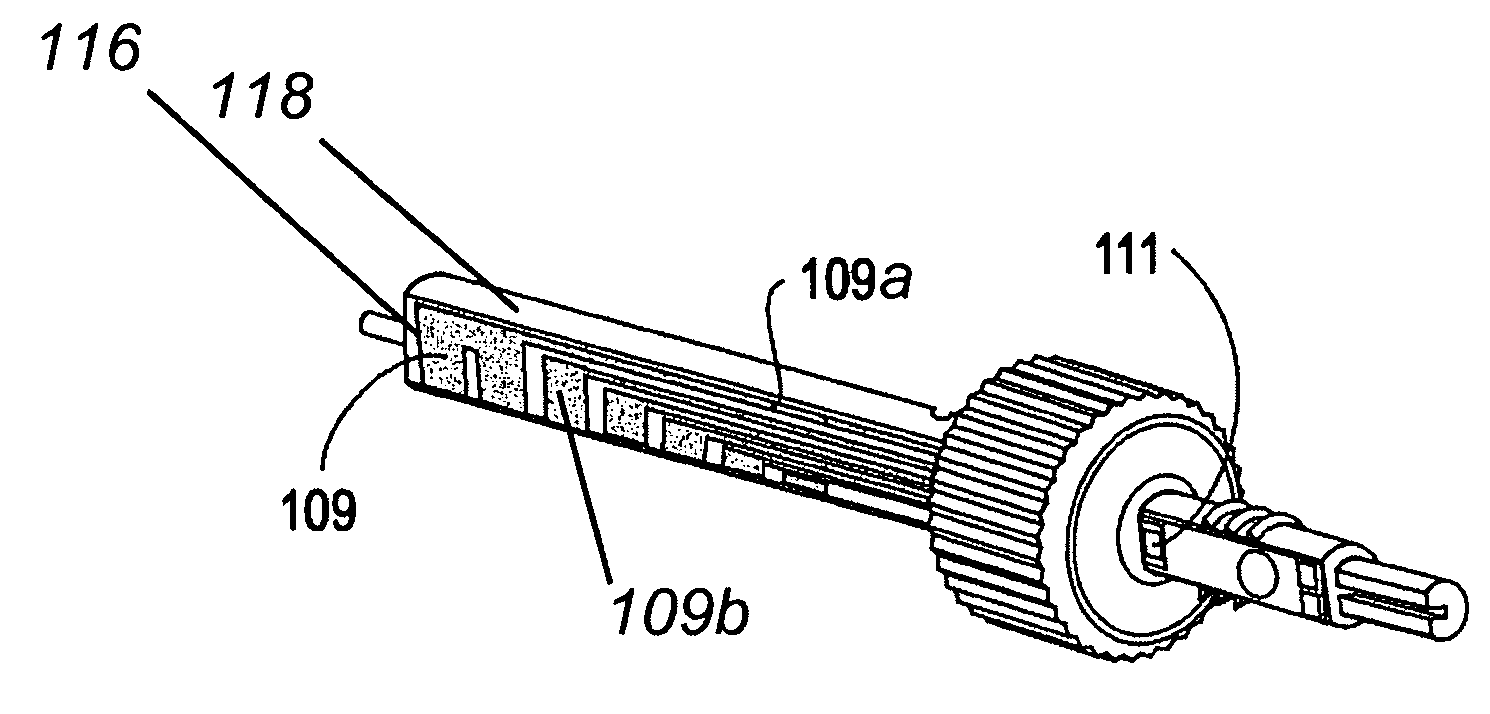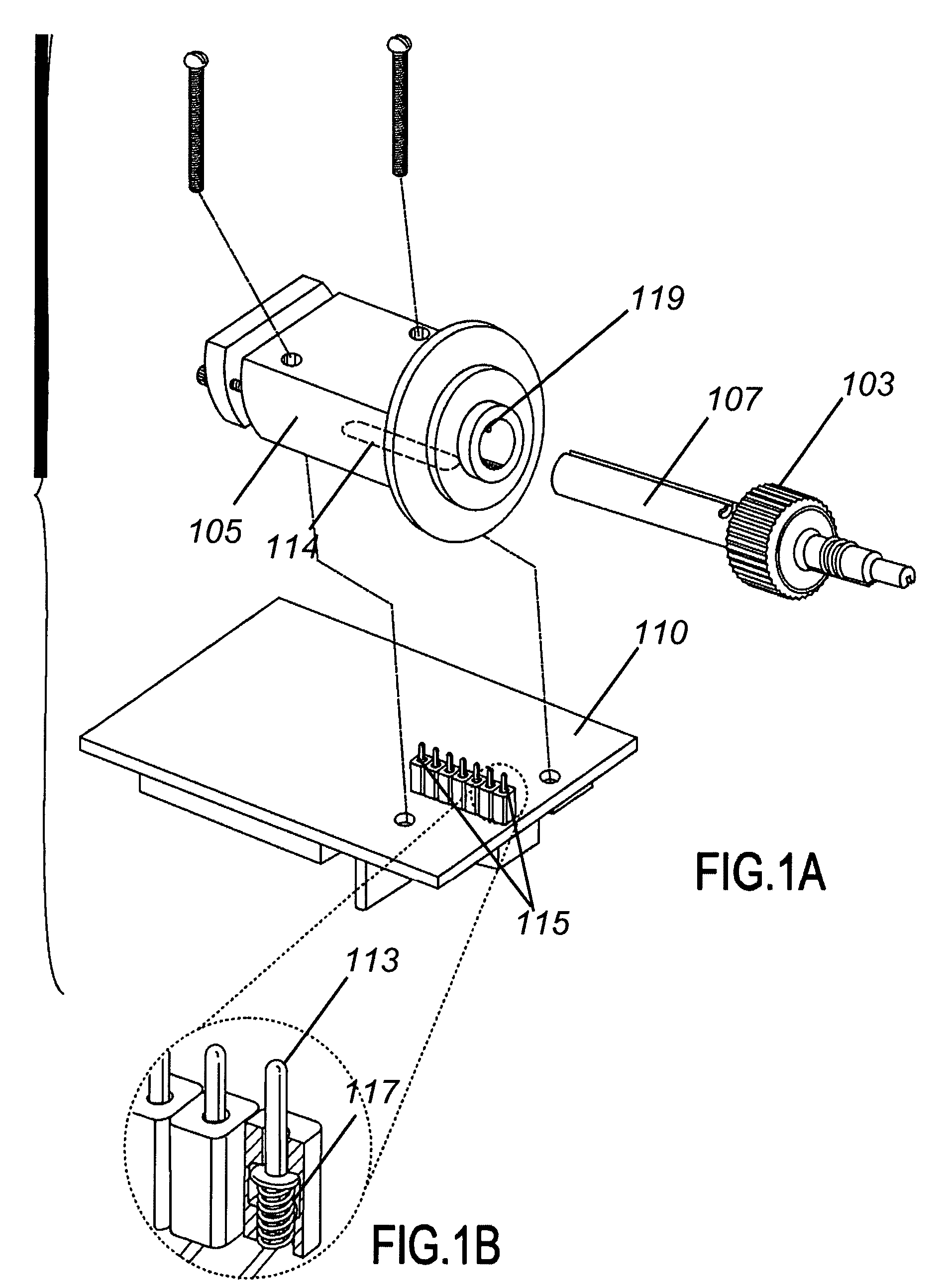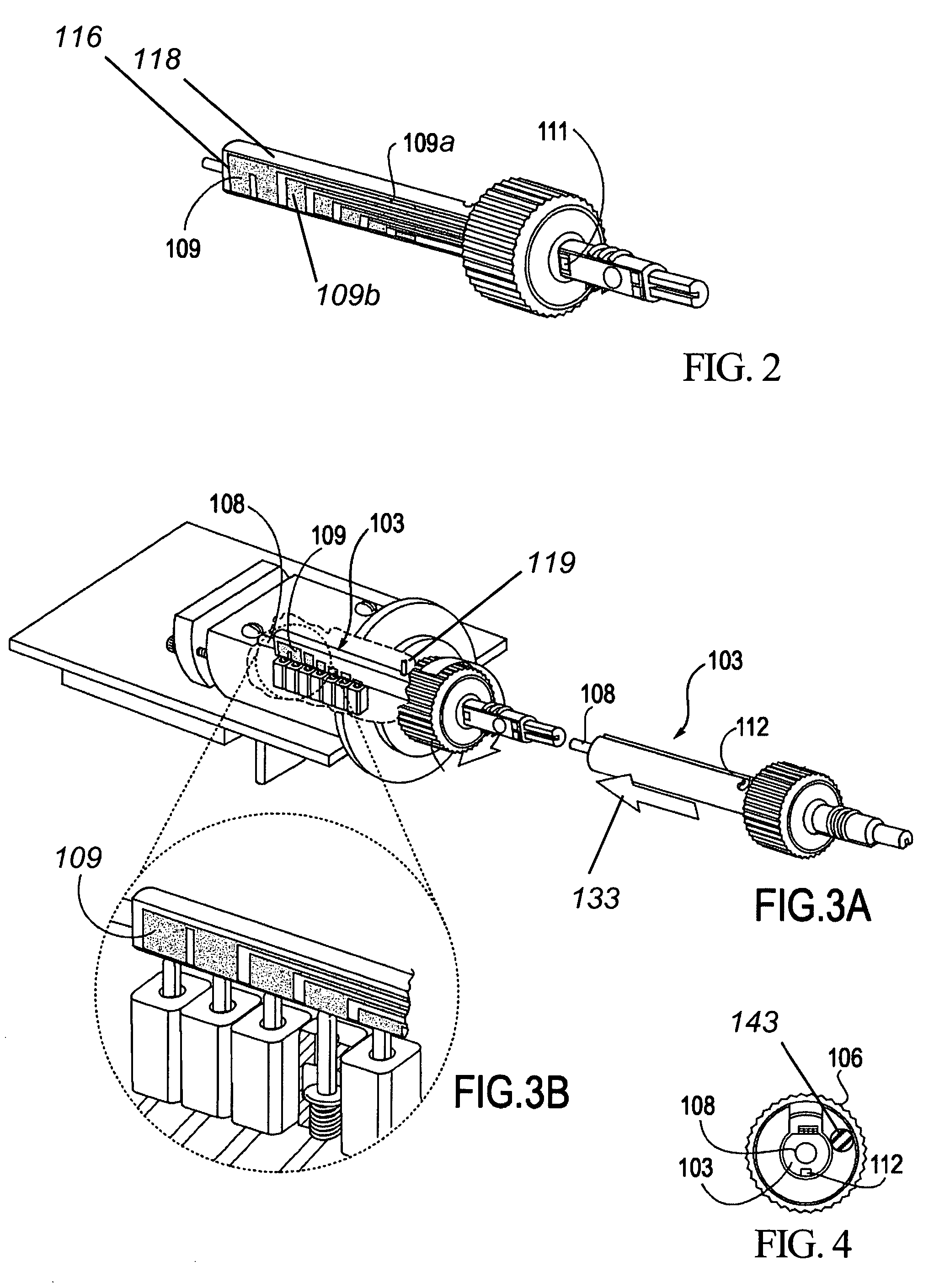Optical and electrical hybrid connector
a hybrid connector and optical technology, applied in the direction of optical elements, coupling device connections, instruments, etc., can solve the problems of reducing the z-axis position accuracy typically required to make an electrical connection, the optical connector is not so tolerant of error, and the fiber light transmission is reduced or rendered useless, etc., to achieve the effect of rapid connection, improved connection, and low cos
- Summary
- Abstract
- Description
- Claims
- Application Information
AI Technical Summary
Benefits of technology
Problems solved by technology
Method used
Image
Examples
example 1
[0082]A working version of the optical and electrical hybrid connector was constructed in accordance with the disclosed invention. Light throughput was recorded in using an EXFO optical power meter (Exfo, Quebec, Canada) through 100 micron glass / glass optical fiber (FV100 / 101 / 125 silica clad fiber, Polymicro Technologies, Phoenix Ariz.) as the shaft plug is inserted in the receptacle socket. Axial displacement relative to the final, fully inserted position was recorded at intervals of 1 mm over the final 1 cm of insertion. Referring now to FIG. 13A, the recorded optical power values were plotted as line 312, which is a function of relative optical throughput vs. distance from the fully inserted connector position. There is noted plateau region 317 spanning the final 2 mm of insertion, in which the intensity of transmitted light does not fall by more than 12%, demonstrating (by definition) an axial-position tolerance, as intended in the present invention.
[0083]The above experiment wa...
example 2
[0085]An optical and electrical hybrid connector was constructed wherein optical coupler 225 was an SMA optical coupler / connector with integrated reversed beam expander optics (Model F230SMA-A collimator, Thorlabs, Newton, N.J.), and further, spring 229 was omitted such that the physical floating action of coupler 225 was completely eliminated. The design, however, remains Z-tolerant, as the collimating lens now provides a lens-coupled axial-position-tolerance.
[0086]As before, light throughput was recorded using an optical power meter through 100 micron glass / glass optical fiber as the probe was inserted into the connector. Axial displacement from the final, fully inserted position was recorded at intervals of 1 mm over the final 1 cm of insertion. Referring now to FIG. 13B, the recorded optical power values were plotted as line 322, which is a function of relative optical throughput vs. distance from the fully inserted connector position. There is noted plateau region 327 spanning ...
PUM
 Login to View More
Login to View More Abstract
Description
Claims
Application Information
 Login to View More
Login to View More - R&D
- Intellectual Property
- Life Sciences
- Materials
- Tech Scout
- Unparalleled Data Quality
- Higher Quality Content
- 60% Fewer Hallucinations
Browse by: Latest US Patents, China's latest patents, Technical Efficacy Thesaurus, Application Domain, Technology Topic, Popular Technical Reports.
© 2025 PatSnap. All rights reserved.Legal|Privacy policy|Modern Slavery Act Transparency Statement|Sitemap|About US| Contact US: help@patsnap.com



